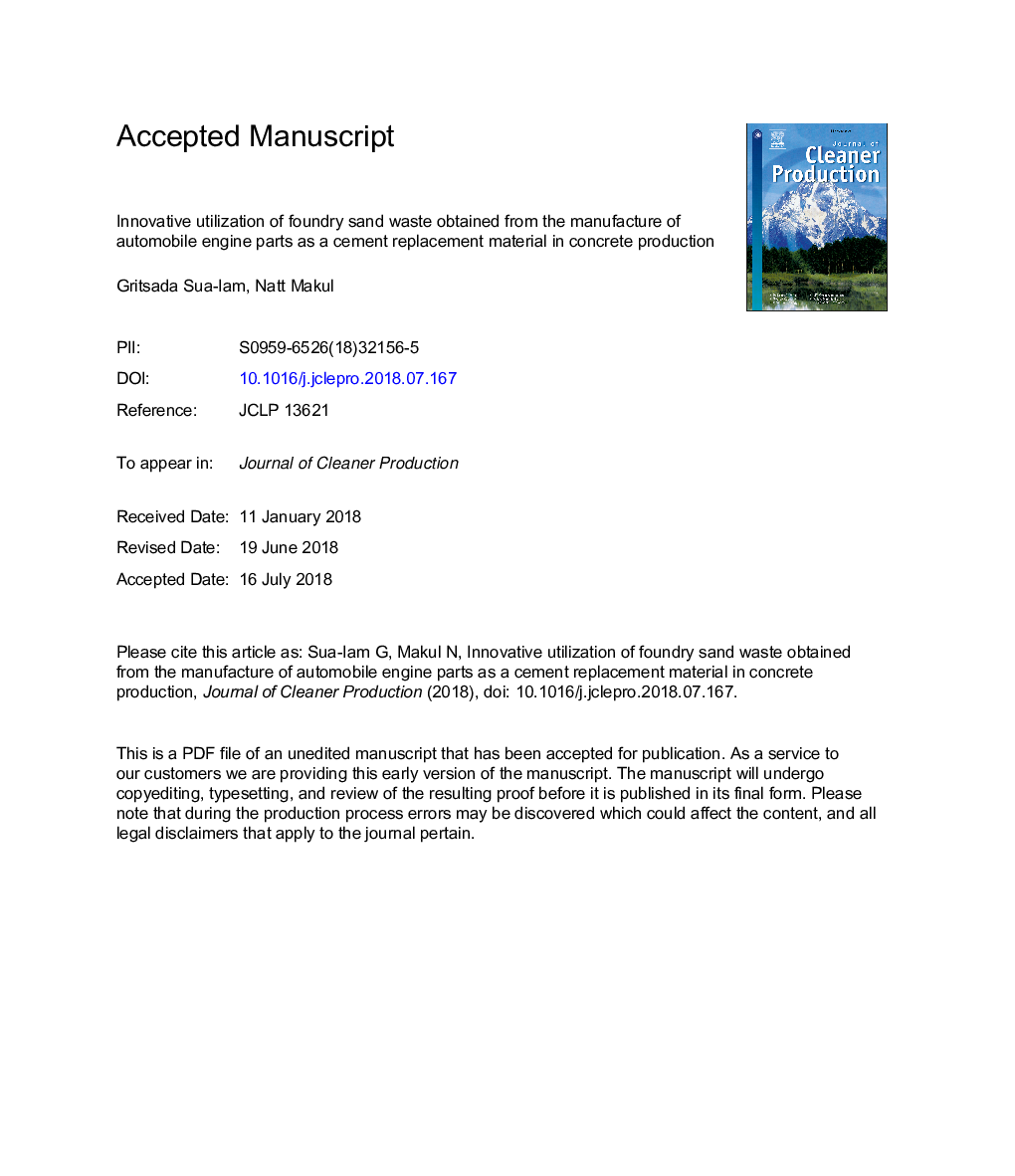| کد مقاله | کد نشریه | سال انتشار | مقاله انگلیسی | نسخه تمام متن |
|---|---|---|---|---|
| 8093147 | 1522053 | 2018 | 46 صفحه PDF | دانلود رایگان |
عنوان انگلیسی مقاله ISI
Innovative utilization of foundry sand waste obtained from the manufacture of automobile engine parts as a cement replacement material in concrete production
ترجمه فارسی عنوان
استفاده نوآورانه از ضایعات شن و ماسه ریخته گری شده از تولید قطعات موتور خودرو به عنوان یک ماده جایگزینی سیمان در تولید بتن
دانلود مقاله + سفارش ترجمه
دانلود مقاله ISI انگلیسی
رایگان برای ایرانیان
کلمات کلیدی
ریخته گری قطعات موتور خودرو، جایگزینی سیمان، بتن، شن و ماسه ریخته گری، ویژگی های مکانیکی، گسترش سولفات،
موضوعات مرتبط
مهندسی و علوم پایه
مهندسی انرژی
انرژی های تجدید پذیر، توسعه پایدار و محیط زیست
چکیده انگلیسی
Automobile engine parts foundry sand waste (ASW) is primarily a by-product of the engine part casting process used by automobile industries. In this study, the recycling and reuse of ASW in concrete production were investigated. A preliminary investigation indicated that ASW has chemical composition according to American Society for Testing and Materials (ASTM) C618. Its total content of SiO2, Al2O3, and Fe2O3 was 93.95%, and its strength activity index was more than 75% of that of the control mortar at 7 and 28 days, indicating that ASW can be used as a supplementary cementitious material in concrete. Ordinary Portland cement (OPC) was replaced with 0, 10, 20, 30, or 40â¯wt% ASW. Fresh concrete properties, including water requirement, slump test, slump loss, unit weight and setting time, were studied in addition to the materials' compressive strength, tensile strength, and modulus of elasticity. Moreover, sulfate expansion after up to 154 days of immersion in a 5% sodium sulfate (Na2SO4) solution and mass loss under sulfuric (H2SO4) attack were analyzed. The tested concrete samples were normal concrete consisting of a water-reducing admixture and total binder materials at 300 and 400â¯kg/m3 with desired initial slumps of 5â¯Â±â¯0.5, 10â¯Â±â¯0.5 and 15â¯Â±â¯0.5â¯cm. The test results indicated that the addition of ASW as a partial cement replacement resulted in lower unit weight, compressive and splitting tensile strength, and modulus of elasticity and higher water requirement, slump loss, setting time and resistance to sulfuric acid attack than were observed in conventional concrete. In the sodium sulfate solution, the linear expansion of the concrete mixtures decreased as ASW content increased and total binder materials decreased. These findings suggest that ASW could potentially replace OPC. However, to obtain a 28-day compressive strength of 27-33â¯MPaâ¯at initial slumps up to 10â¯Â±â¯0.5â¯cm, the replacement should not exceed 30â¯wt%.
ناشر
Database: Elsevier - ScienceDirect (ساینس دایرکت)
Journal: Journal of Cleaner Production - Volume 199, 20 October 2018, Pages 305-320
Journal: Journal of Cleaner Production - Volume 199, 20 October 2018, Pages 305-320
نویسندگان
Natt Makul, Gritsada Sua-Iam,
